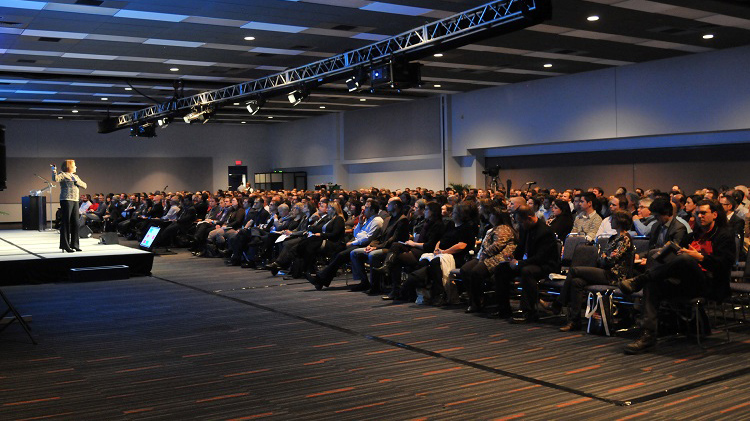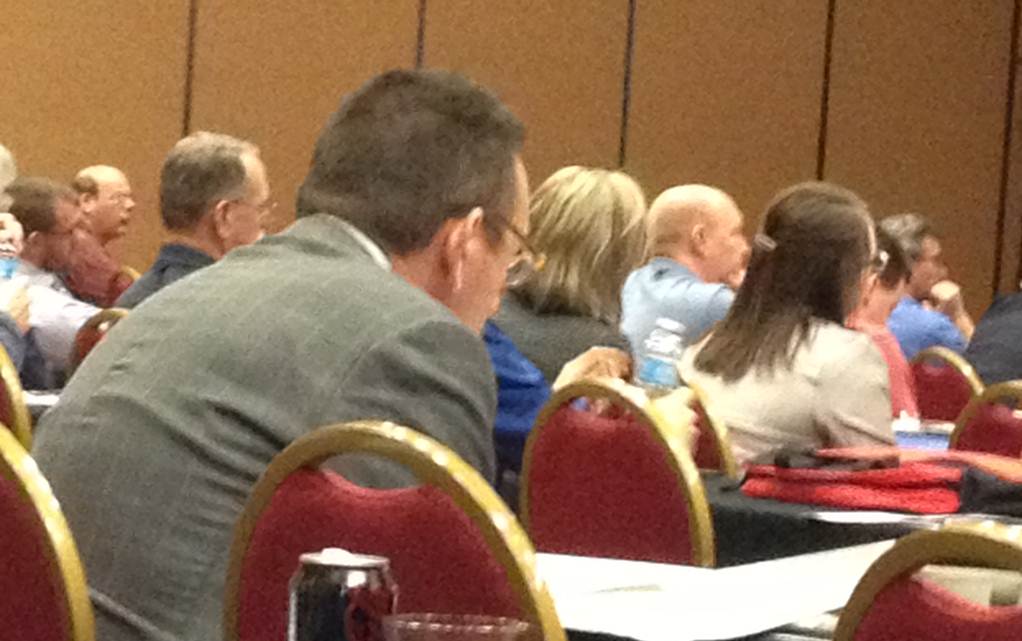


We’ve all been there. A boring talk. At a recent conference I keynoted at, I watched as a speaker failed to capture his audience’s attention. The gentleman in the above photo read the newspaper through the speaker’s entire talk and seven people in eyeshot were on their devices for the majority of the talk.
No matter whether you you’re presenting at a conference, to your leadership team, or to your staff, it’s vital that you remember that, at that moment, you’re a sales person in the business of selling ideas. To get the sale, you have to grab your audience and get them compelling reasons to believe you. There are seven keys to success I operate with when preparing and delivering a presentation:
Where to start? Where any improvement-minded person does: with the PDSA cycle (plan-do-study-adjust):
To help you on your journey, I highly recommend these three books:
And a final note, no matter whether you’re presenting a scientific paper to a bone-dry panel of PhDs or a new program to a rowdy group of teenagers, there’s an element of “info-taining” that you need to nail. You don’t have to resort to silly tactics, but you do have to sell. And selling requires that you connect with people, which requires you to move them emotionally. Some way, some how.
Thank you, David. Good points. Very true about respect – I’m kickin’ myself that I didn’t mention it. I continuously scan my audience for signs of engagement or disengagement. and often wonder whether speakers who evoke the type of response in the photo don’t see it, or see it and don’t know what to do about it. In this case, I think the speaker sensed it but made the fatal mistake of being “locked into” his agenda. Proficient speakers (indeed top performers of any type) can adapt quickly to changing circumstances with the sole purpose of better serving their customers. The audience is the speaker’s customer.
Good point about humility as well. One can’t serve effectively nor improve if he/she doesn’t have a healthy dose of humility. Good points.
Great suggestions for PDSA in presenting. I would add another book I love is “Training From the Back of the Room” by Sharon Bowman. This book is not a perfect fit for presentations that’s not designed for audience participation. I find I can instantly work to engage my audience to telling a self-deprecating joke about how I have failed in the past in my efforts to get me where I am today. Also apply your approach to their intellect (Know thy audience). If they feel like you care what they’re interested in they will stop reading the newspaper while you’re speaking.
Thank you, Patrick, for the book suggestion. I’ve heard of it before but now am going to get it. Here’s the Amazon link for anyone who might be interested – https://amzn.to/12BMcyJ. Maybe a key performance indicator for speakers should be the degree to which people aren’t reading the paper. :-)
by David Kasprzak
Good points and great advice all the way around, Karen. I’m beginning to deliver some presentation myself, and the one bit of advice I’ll throw in is that PDSA should be done during the presentation, too. The speaker you mentioned above should have noted people were tuning out and changed the message or the delivery to suit the audience. In a way, this is respect for people – your audience doesn’t owe you their attention, you owe the audience enough respect to make the content and style of your presentation interesting. Also, be humble enough to know that not everyone will find it interesting and you must constantly gauge the audience’s feedback in order to identify what’s working and what isn’t.